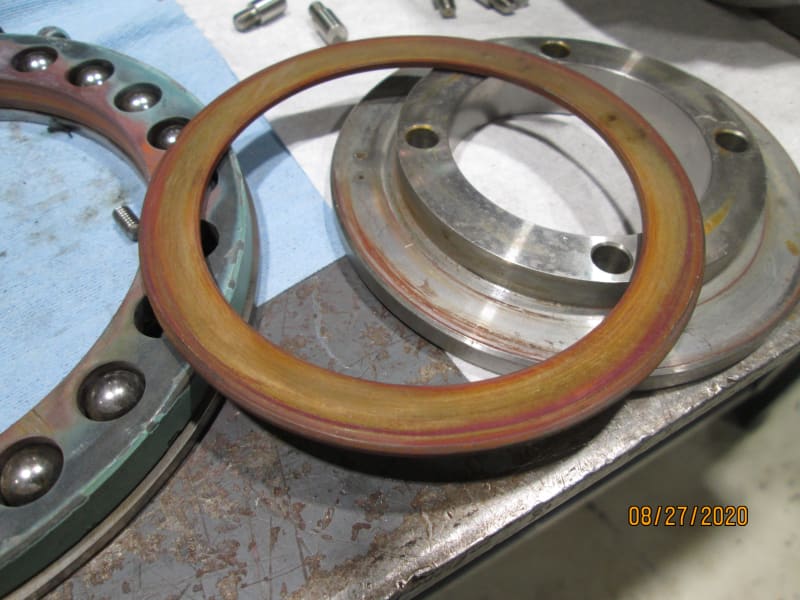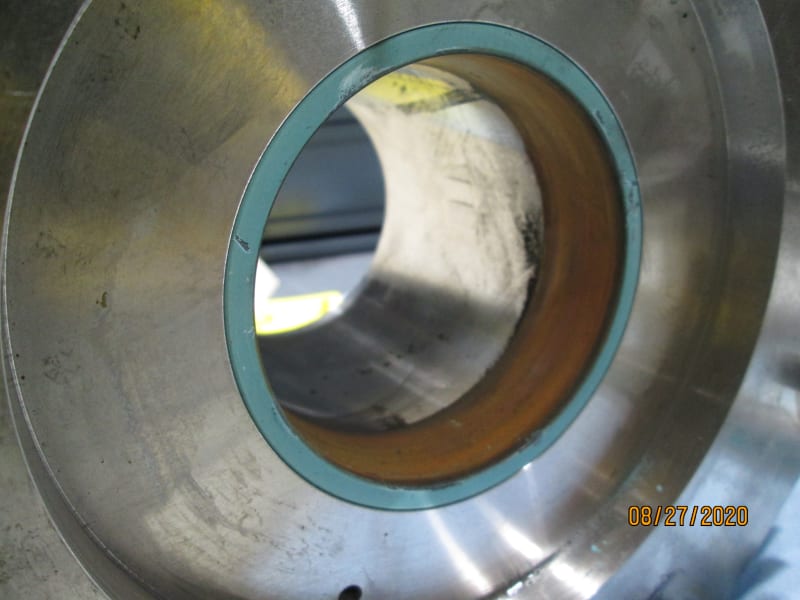AnthonyJ777
Mechanical
Forum,
I need help trying to determine why the SAE 660 bronze bushings in our underwater nuclear fuel handling tool are experiencing aggressive corrosion rates. The two pictures below are just two examples of some of the types of corrosion we're seeing. From my understanding the blue color is Patina, a corrosion specific for bronze/copper metals. The red color looks like a traditional corrosion on copper based metals.
My theory is that perhaps the bushing tolerance of the tool is too tight causing the chromium oxide layer of the stainless to wear off which then would be the catalyst to rust. After use, the iron particulates would get transferred onto the bronze bushing and begin to spread across the face of the bushing too? Does anyone have any experience with such a chemical reaction with underwater bushings in plants?


I need help trying to determine why the SAE 660 bronze bushings in our underwater nuclear fuel handling tool are experiencing aggressive corrosion rates. The two pictures below are just two examples of some of the types of corrosion we're seeing. From my understanding the blue color is Patina, a corrosion specific for bronze/copper metals. The red color looks like a traditional corrosion on copper based metals.
My theory is that perhaps the bushing tolerance of the tool is too tight causing the chromium oxide layer of the stainless to wear off which then would be the catalyst to rust. After use, the iron particulates would get transferred onto the bronze bushing and begin to spread across the face of the bushing too? Does anyone have any experience with such a chemical reaction with underwater bushings in plants?


